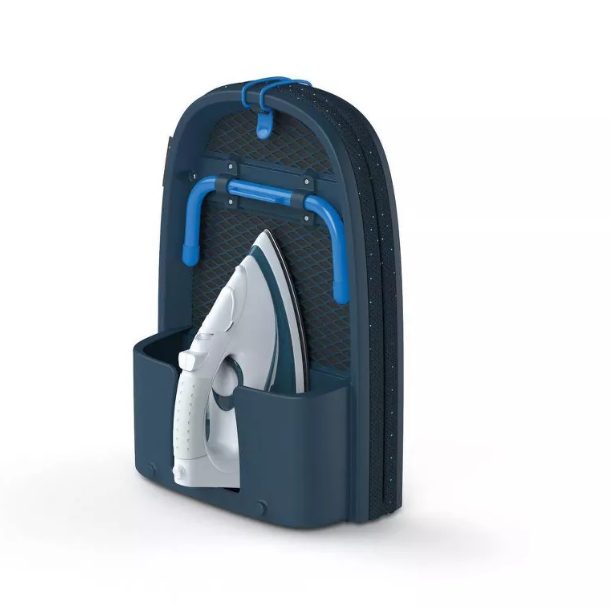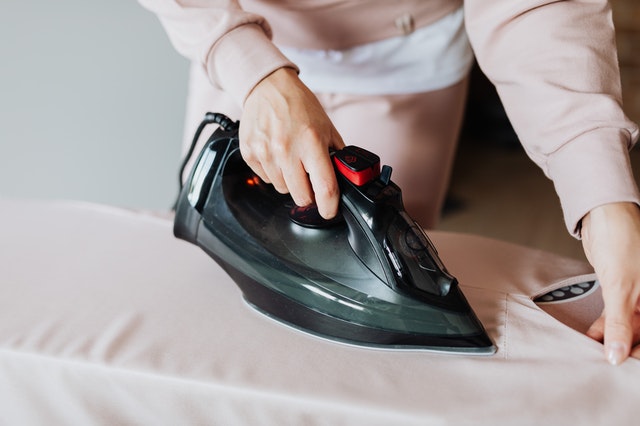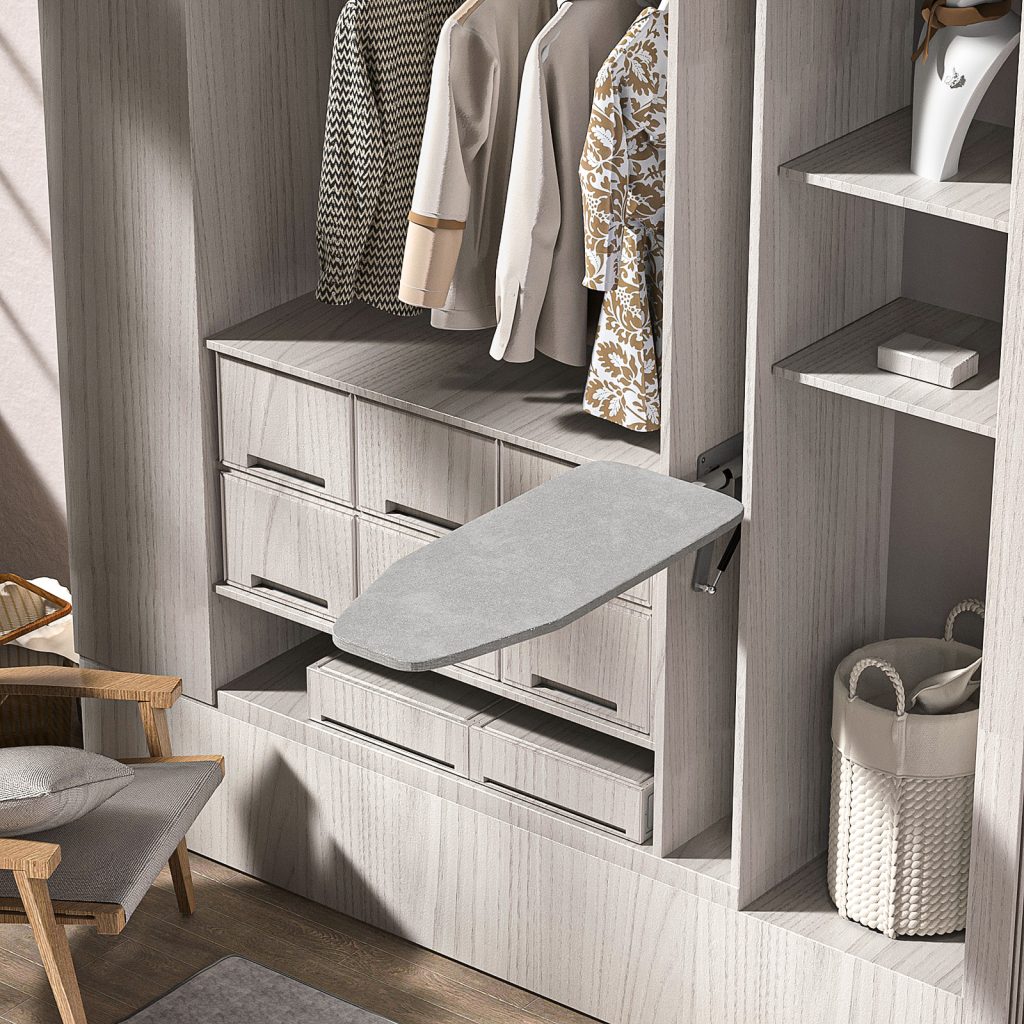Ironing may seem like a mundane household chore, but it can actually be an art form. With the right techniques and tools, you can achieve perfectly pressed clothes that will make you look and feel your best. In this article, we will explore the art of folding and how to master your ironing board for wrinkle-free perfection.
Why Ironing Matters
Ironing is not just about removing wrinkles from your clothes. It also helps to maintain the shape and structure of your garments, making them look more polished and professional. Ironing also helps to remove any lingering odors and bacteria, ensuring that your clothes are fresh and clean.
The Importance of Proper Ironing Techniques
Proper ironing techniques are essential for achieving the best results. Here are some tips to keep in mind:
- Start with a clean iron and ironing board. Any dirt or residue on your iron can transfer onto your clothes, causing stains or damage. Make sure to clean your iron regularly and wipe down your ironing board before each use.
- Use the right temperature setting for your fabric. Different fabrics require different heat levels to avoid damage. Check the care label on your garment to determine the appropriate temperature setting for ironing.
- Iron in a back and forth motion. Ironing in a circular motion can stretch out your clothes and create wrinkles. Instead, move the iron back and forth in a straight line.
- Use steam for stubborn wrinkles. Steam helps to relax the fibers in your clothes, making it easier to remove wrinkles. If your iron has a steam function, use it to achieve the best results.
- Iron in sections. Start with the collar and cuffs, then move on to the sleeves, front, back, and finally the sides. This will ensure that you don’t miss any areas and will help to maintain the shape of your garment.
Mastering Your Ironing Board
Your ironing board is a crucial tool in achieving wrinkle-free perfection. Here are some tips for mastering your ironing board:
Choose the Right Ironing Board
There are several types of ironing boards available, each with its own benefits. Consider the following options:
- Standard ironing board: This is the most common type of ironing board, with a flat surface and adjustable height. It is suitable for most ironing needs and is easy to store.
- Tabletop ironing board: This is a smaller version of a standard ironing board that can be placed on a table or countertop. It is ideal for small spaces and quick touch-ups.
- Wall-mounted ironing board: This type of ironing board is attached to the wall and can be folded away when not in use. It is a great space-saving option for smaller homes.
- Specialty ironing board: There are also specialty ironing boards available for specific needs, such as sleeve boards for ironing sleeves and pant legs, or ironing boards with built-in racks for hanging clothes.
Choose the type of ironing board that best suits your needs and space constraints.
Set Up Your Folding Ironing Board Properly
To achieve the best results, your ironing board should be set up correctly. Here’s how:
- Adjust the height of your ironing board to a comfortable level. You should be able to iron without hunching over or straining your back.
- Make sure the ironing board cover is clean and smooth. Any wrinkles or dirt on the cover can transfer onto your clothes.
- Secure the cover tightly to the board. A loose cover can cause wrinkles and make ironing more difficult.
- Place your ironing board near an outlet. This will make it easier to use your iron and steam function without having to stretch the cord too far.
Use Accessories for Better Results
There are several accessories available that can make ironing easier and more effective. Consider the following options:
- Ironing board cover: A good ironing board cover can make a big difference in achieving wrinkle-free results. Look for a cover with a thick padding for better steam absorption and a smooth surface for easy gliding.
- Iron rest: An iron rest is a small shelf attached to the ironing board where you can place your iron when not in use. This will prevent any accidental burns or damage to your ironing board cover.
- Spray bottle: A spray bottle filled with water can be used to dampen clothes before ironing. This will help to relax the fibers and make it easier to remove wrinkles.
- Ironing mat: An ironing mat can be placed on top of your ironing board to create a larger surface area for ironing. This is especially useful for larger items like sheets or tablecloths.
Tips for Ironing Different Types of Clothing
Different types of clothing require different ironing techniques. Here are some tips for ironing common items:
Shirts
- Start with the collar and cuffs. Lay the collar flat and iron from the points towards the center. For cuffs, iron the inside first, then the outside.
- Move on to the sleeves. Lay the sleeve flat and iron from the shoulder to the cuff. Be careful not to create any new wrinkles.
- Iron the front and back. Lay the shirt flat and iron from the top down, making sure to avoid any buttons or pockets.
- Finish with the sides.
Pants
- Start with the waistband. Lay the pants flat and iron the waistband first, then move on to the pockets.
- Iron the front and back. Lay the pants flat and iron from the top down, making sure to avoid any buttons or pockets.
- Move on to the legs.
Dresses and Skirts
- Start with the collar and sleeves. Lay the dress or skirt flat and iron the collar and sleeves first.
- Iron the front and back. Lay the dress or skirt flat and iron from the top down, making sure to avoid any buttons or pockets.
- Finish with the sides.
Common Ironing Mistakes to Avoid
Even with the best techniques and tools, there are some common ironing mistakes that can ruin your clothes. Here are some to avoid:
- Using too much heat: Ironing at too high of a temperature can damage your clothes, especially delicate fabrics. Always check the care label and adjust the temperature accordingly.
- Not using enough steam: Steam helps to relax the fibers in your clothes, making it easier to remove wrinkles. Make sure to use the steam function on your iron for best results.
- Ironing over buttons or zippers: Ironing over buttons or zippers can cause damage to your clothes and your iron. Always avoid these areas when ironing.
- Ironing in a circular motion: As mentioned earlier, ironing in a circular motion can stretch out your clothes and create wrinkles. Stick to a back and forth motion for best results.
Conclusion
Ironing may seem like a tedious task, but with the right techniques and tools, it can become an enjoyable and satisfying experience. By mastering your ironing board and using proper ironing techniques, you can achieve perfectly pressed clothes that will make you look and feel your best. So next time you’re faced with a pile of wrinkled clothes, remember these tips and turn ironing into an art form.



